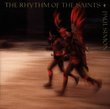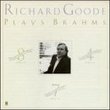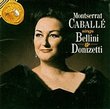| All Artists: Ludwig van Beethoven, Alfred Brendel Title: Beethoven: Piano Sonatas Members Wishing: 0 Total Copies: 0 Label: Philips Release Date: 10/25/1990 Genre: Classical Styles: Forms & Genres, Sonatas, Historical Periods, Classical (c.1770-1830), Romantic (c.1820-1910) Number of Discs: 1 SwapaCD Credits: 1 UPCs: 028941147028, 028941147028 |
Search - Ludwig van Beethoven, Alfred Brendel :: Beethoven: Piano Sonatas
 | Ludwig van Beethoven, Alfred Brendel Beethoven: Piano Sonatas Genre: Classical
|
Larger Image |
CD DetailsSimilarly Requested CDs
|
CD ReviewsAn Introduction to Beethoven's Piano Sonatas Robin Friedman | Washington, D.C. United States | 12/05/2006 (5 out of 5 stars) "Beethoven's 32 sonatas for the piano span virtually the entirety of his creative life and are a never-ending source of inspiration. I have lived with and attempted to play many of them over the years. I first became acquainted with recordings of the Beethoven sonatas as a child when I heard a then-young Alfred Brendel's complete cycle, dating from the 1950s, on the low-priced Vox label. Brendel has long been special to me for his role in introducing me to Beethoven's piano music. As an amateur pianist, I identify with him on some level because Brendel was not a child prodigy, was largely self-taught, and is not a good sight-reader. I wanted to review this CD of Brendel because it may well serve to introduce new or young listeners to Beethoven -- as Brendel's Vox recordings did for me many years ago. The CD consists of Beethoven's three most famous works in this form -- the Sonata Pathetique, opus 13, the "Moonlight" sonata, opus 27 no. 2, and the "Appassionata" sonata, opus, 57. I have studied and played the first two of these sonatas myself. The recording dates from the early 1970s when Brendel completed his second Beethoven cycle. (The first cycle was the one on Vox and the third cycle dates from the 1990s.) These great works, beautifully performed, will introduce new listeners and budding pianists to the world of the Beethoven sonatas. For those new to this music, I will describe the works briefly. The Sonata Pathetique in C minor, opus 13 dates from 1799 when Beethoven was an ambitious young man of 29 trying to make his way as a pianist and composer. Although Beethoven wrote several earlier excellent piano sonatas, in the Pathetique, he came into his own and created a distinctive work in his own voice. The name of the work is Beethoven's, and it conveys a sense of feeling, passion, and tragedy rather than pathos. The three-movement work opens with a highly unusual slow section, marked "grave" which recurs in the work. It is followed by an angry and rapid allegro with an opening theme over a tremelo figure in the left hand, and a second theme involving hand-crossing (a theme split between the upper and lower register of the keyboard.) The second movement is frequently played by itself. It is a songful adagio which contrasts dramatically with the fury of the opening movement. The concluding rondo sometimes is taken lightly, but it works to restore the tragic theme of the opening movement. The "Moonlight" sonata, (the name is not Beethoven's) dates from 1801 when the composer was 31. In a space of two years, Beethoven wrote this sonata with a markedly different character than the Pathetique. The work is dedicated to a young woman named Giuletta Guicciardi, and some view this sonata as an expression of Beethoven's failed love and of his resolute determination to carry on in the face of romantic disappointment. The first movement of this work is one of the best-known pieces in music with its sad and slow (but not too slow) series of triplets over a deep chordal accompaniment. The movement has the character of an improvisation, which masks its tight, disciplined construction. The second movement serves as a bridge and a transition between the two outer, passionate movements of the work. The finale is a rapid-fire angry movement with long running themes, angry chordal outbursts, and moments in an almost pleading voice. Listening to this sonata in its entirety will put the opening movement in perspective. The sonata in F minor, opus 57 (again the name "appassionata" is not Beethoven's) dates from 1805--06. Together with the opus 53 piano sonata, not included here, it is one of Beethoven's "heroic" compositions, similar to the composer's third and fifth symphonies and his fifth piano concerto. This three movement sonata is a work full of feeling, sad, passionate, angry, and determined. The work will take hold of and move each listener in his or her own way. The opening movement contrasts a sad, ominous first theme with a more lyrical theme -- there are long runs and angry chordal outbursts. The second movement provides a moment of serenity and calm in a theme and set of variations. The finale -- which should not be rushed -- is a brooding, angry movement with a stunning and smashing conclusion. Those who fall in love with these sonatas might then want to explore three additional works in the series which are almost as famous -- the D minor sonata, opus 31 no. 2 (the "Tempest"), the C major sonata, opus 53, ("Waldstein") and the sonata in E flat major, opus 81a, "Les Adieux". The sonatas include many inexhaustible treasures. This CD will make an ideal gift to a new listener -- or to yourself -- at this holiday time of the year." Excellent work by Brendel Chad Nevils | Pennsylvania | 08/25/2000 (5 out of 5 stars) "Brendel brings to life the feeling and raw emotion Beethoven has woven into these compositions. Upon listening to the opening portion of Sonata No. 14, one is instantly moved and drawn into the piece itself, and all surroundings blur into a surreal world of music. Brendel, in my opinion, is the best performer of Beethoven's works, short of the icon himself."
|

 Track Listings (9) - Disc #1
Track Listings (9) - Disc #1








